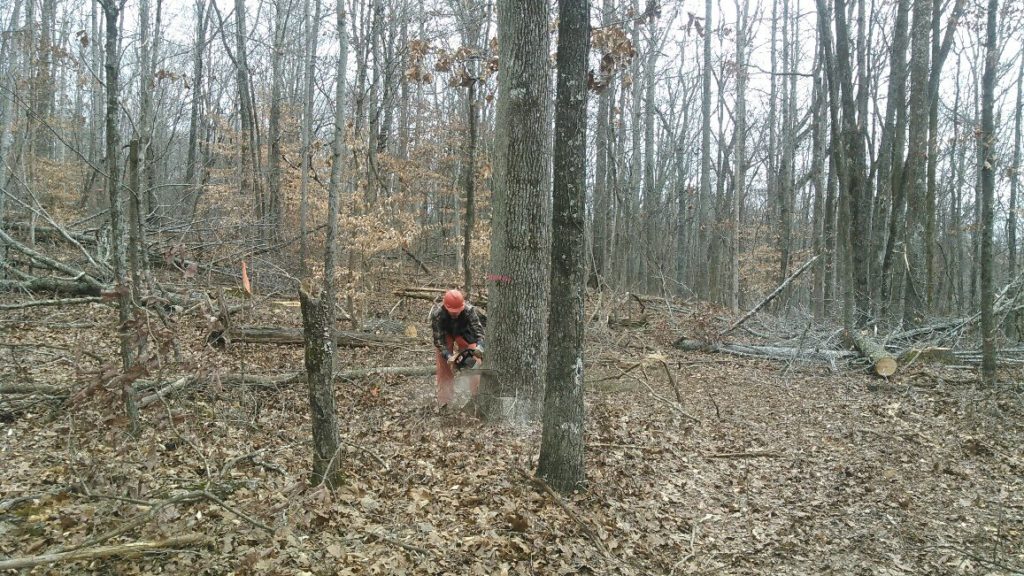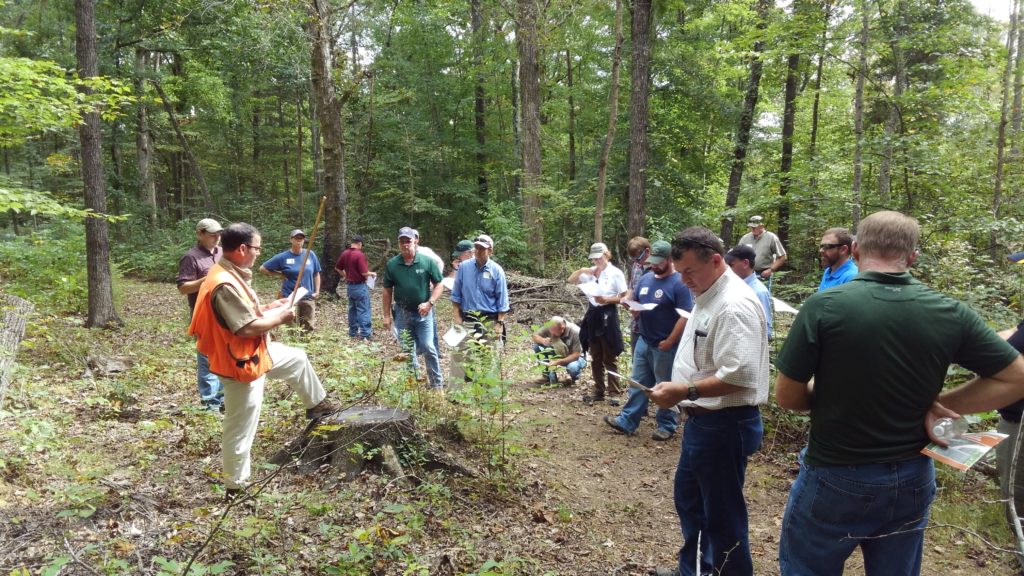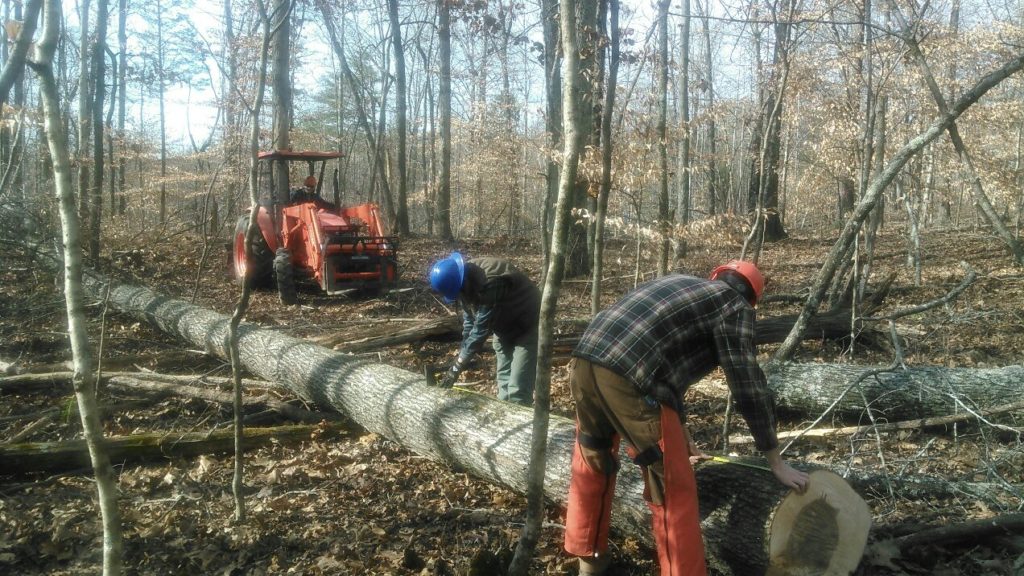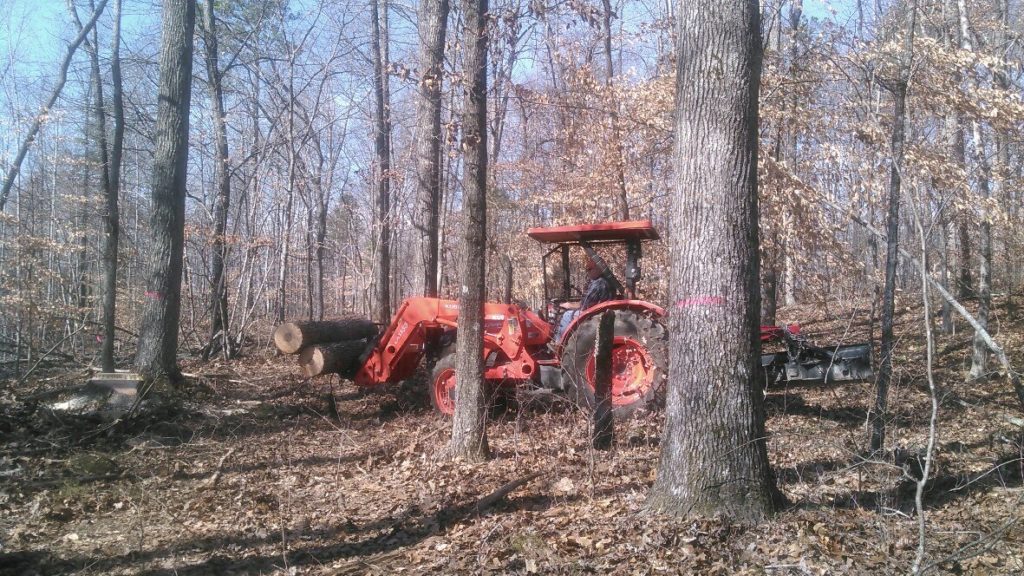Diameter Limit Cutting Demonstration – Oak Ridge, TN
An estimated 4,400 logging jobs occur annually in Tennessee, with a disproportionately low number involving the expertise of a professional forester. Without the knowledge of professionals, the default method of harvesting timber is diameter limit cutting (DLC). DLC is the indiscriminate practice of harvesting all merchantable trees above a specified diameter (for instance 16 inches and larger in diameter).
DLC is a form of high-grading. In forestry, “high-grading is the removal of the most commercially valuable trees, often leaving a residual stand composed of trees of poor condition or species composition” (Helms 1998). In most cases, DLC does not remove undesirable species, culls, or lower-grade trees that fall within the specified diameter limit. Nor does DLC harvest smaller unacceptable trees that fall below the specified diameter limit, trees that should be removed for stand improvement. What DLC does do is sacrifice those desirable, immature crop trees before they reach their financial maturity – trees that if left to grow, could develop into high quality, top-value timber. For these reasons, DLC challenges sustainable forestry.
To address this issue, in 2016 a demonstration was established at the UT FRREC depicting two methods if timber harvesting: 1) a 16” DLC and 2) a sustainably managed harvest. Each site included once acre. The 16” harvest removed 87% of the wood volume and left 19 trees per acre, whereas the sustainably managed harvest removed 27% of the wood volume and left 39 trees per acre. It will be 30 years before a follow-up harvest can be conducted on the DLC site, and even then, the trees will be poor quality. Whereas the sustainably managed site can be harvested in 10 – 15 years and will contain fine quality red oak, tulip poplar, and hickory.
Diameter limit cutting has been practiced for generations, is simple to implement, and can provide favorable short-term financial returns. However, DLC usually leaves a degraded forest and this runs counter to sustainable forestry. This demonstration depicts that reality.
Diameter Limit Cutting Demonstration – Estill Springs, TN
An estimated 4,400 logging jobs occur annually in Tennessee, with a disproportionately low number involving the expertise of a professional forester. Without the knowledge of professionals, the default method of harvesting timber is diameter limit cutting (DLC). DLC is the indiscriminate practice of harvesting all merchantable trees above a specified diameter (for instance 16 inches and larger in diameter).
DLC is a form of high-grading. In forestry, “high-grading is the removal of the most commercially valuable trees, often leaving a residual stand composed of trees of poor condition or species composition” (Helms 1998). In most cases, DLC does not remove undesirable species, culls, or lower-grade trees that fall within the specified diameter limit. Nor does DLC harvest smaller unacceptable trees that fall below the specified diameter limit, trees that should be removed for stand improvement. What DLC does do is sacrifice those desirable, immature crop trees before they reach their financial maturity – trees that if left to grow, could develop into high quality, top-value timber. For these reasons, DLC challenges sustainable forestry.
To address this issue, in 2016 a demonstration was established at the UT Highland Rim Forest depicting two methods if timber harvesting: 1) a 16” DLC and 2) a sustainably managed harvest. Each site included once acre. The 16” harvest removed 83% of the wood volume and left 25 trees per acre, whereas the sustainably managed harvest removed 34% of the wood volume and left 41 trees per acre. It will be 30 years before a follow-up harvest can be conducted on the DLC site, and even then, the trees will be poor quality. Whereas the sustainably managed site can be harvested in 10 – 15 years and will contain fine quality red oak.
Diameter limit cutting has been practiced for generations, is simple to implement, and can provide favorable short-term financial returns. However, DLC usually leaves a degraded forest and this runs counter to sustainable forestry. This demonstration depicts that reality.




